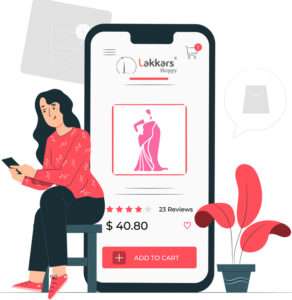The 4 Changes We’ll See In The Future for Fashion Makeover
Fashion has always been known to push the envelope. With new trends and ideas, fashion has an eye towards the future. The fashion industry will see huge amounts of innovation in coming years as new technology and changing customer trends and demands will transform the industry.
Data-Driven
It used to be that consumers wore whatever designers created. Those days are over, and fashion brands now use data to understand customer preferences, monitor their shopping behaviour and create products that meet their needs. The future of fashion is data-driven: by leveraging data on consumer trends, brands can create pieces consumers are most likely to purchase.
Fashion forecasting has long been an art form, but with the growth of data analytics, it now becomes more of a science. That data extends to algorithms. Amazon is developing a machine learning program to automatically assess if an item is “stylish” or not. Google is testing a user-driven AI fashion design that uses algorithms to create new pieces and styles. Data of all kinds will soon be sewn into every aspect of fashion.

Sustainable
Fashion has long been one of the biggest contributors to waste and climate change, largely because of its unsustainable and non-eco-friendly production methods. But the tides are changing, and brands are moving towards more sustainable fabrics and manufacturing methods.
Shopping for pre-owned items is also on the rise. The secondhand market is expected to hit $64 billion by 2024. Even as other forms of fashion shopping hit a COVID slump, online secondhand shopping continues to see strong growth. With more consumers looking to purchase previously worn items, fashion brands must create pieces with longevity and that can last beyond a single owner.
Digital
The future of fashion is happening online, and brands will have to adjust how they create and sell clothing to make it work in a digital world.
Even consumers who make purchases in person will still be influenced by digital efforts. A number of large fashion brands are moving to virtual fashion shows and are digitizing their designs into 3D prototypes on avatars that are easier to showcase, test and manufacture on demand. Designers can test out ideas virtually and float them with consumers before actually creating the physical pieces.
Simplified
Fueled largely by COVID-19 changes, fashion is simplifying, both in its styles and in its delivery. Many fashion houses used to create eight collections a year. The result was a crowded fashion show schedule and items showing up in stores months before customers were ready to wear them, like swimsuits in February and winter wear in August. The new shift in fashion is to two collections a year: spring/summer and fall/winter. The simplified approach puts customers at the centre by creating pieces when people will actually be shopping for them.
Fashion trends themselves will also become more simplified. With many people working from home and social distancing for the foreseeable future, fashion brands have toned down their styling in favour of comfortable loungewear and clothing that works for sleeping and living. Even after the pandemic, clothing will likely stay simple and comfortable.
The future of fashion will focus on customers and providing an innovative experience. The industry is continually evolving, but changes in the future will create a more sustainable, customer-centric and efficient industry.

Magazine launched for helping women for success. Lakkars has always served and worked efficiently towards women empowerment, we have blossomed into America’s most-read fashion magazine.


